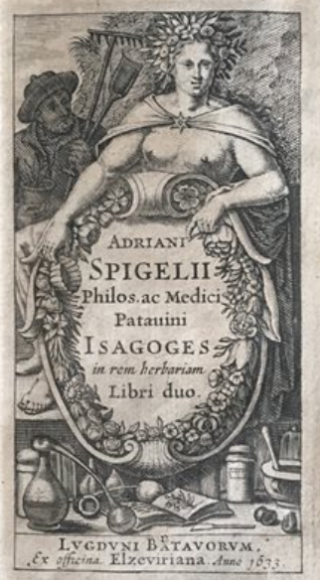Tiniest Tome
Stephen Sinon is the William B. O’Connor Curator of Special Collections, Research, and Archives in the LuEsther T. Mertz Library of the New York Botanical Garden.

Title page depicting Urania, muse of science, with an album of pressed plants at her feel and a gardener in her shadow.
Adrian Spigelius (1578–1625), also known as Adriaan van den Speigel, was a Flemish anatomist and botanist. He came from a family of surgeons and most of his life he practiced in Padua after having studied anatomy there at the University. He also practiced botany, and the genus Spigellia, containing some 60 species, is named in his honor. He was also the first to write a detailed description of malaria.
His Isagoges in rem herbariam, an early work on how to prepare a herbarium, gave the first written instructions on preparing dried plant specimens, a practice which had only begun a few decades earlier. It was first published in Padua in 1606, reprinted two years later, and again in Latin in the Netherlands in 1633 and 1673—and finally in Germany in 1667.
The Mertz Library owns a copy of the 1633 Dutch edition which was printed in a tiny pocket book size, measuring just two inches wide and four inches tall. This printing is one of Elzevir Press’ pocket editions of significant texts, begun in 1629. The aim was to ensure wide circulation of accurate texts for everyday use. These pocket books were printed with engraved title pages, narrow margins, and a specially designed font of type. The measurements of this book make it a candidate for the smallest printed book in the Mertz Library collections.
SUBSCRIBE
Enter your email address to subscribe to this blog and receive updates on new posts.











